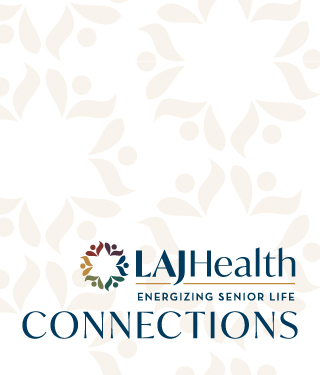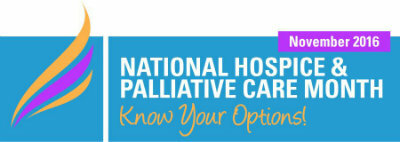Palliative and Hospice Care: Know Your Options!


Palliative and Hospice Care: Know Your Options!
November is National Hospice and Palliative Care Month. During this time, hospices across the country are reaching out to raise awareness about the highest quality care for all people coping with life-limiting illness. This year’s theme is Know Your Options!
Being aware of your options before a medical crisis can help ease some of the stress that most people experience in that situation.

The Los Angeles Jewish Home offers both palliative and hospice services through Skirball Hospice and the Jewish Home Center for Palliative Medicine. Let’s take this opportunity to explore what each service offers.
“Palliative” means to relieve or lessen without curing. Palliative medicine is often thought of as only a part of hospice care provided to someone who has been diagnosed with a fatal disease or illness. While it is a crucial component and indeed grew out of hospice care, palliative medicine is a much broader specialty and can treat patients in various stages of their illness, including alongside curative treatment. Palliative care can be provided in a hospital, cancer center, nursing home, outpatient clinic, hospices, or in the patient’s home.
Focusing on the symptoms of both the disease and the treatment, palliative care helps with a wide range of issues. These may include pain, depression, anxiety, fatigue, shortness of breath, constipation, nausea, loss of appetite, and difficulty sleeping. It also helps an individual to gain the strength to carry on with daily life and can help improve the ability to tolerate medical treatments. Palliative care also gives an individual more control over their care by improving their understanding of treatment options.
Compassionate end-of-life care, provided by hospice services, enables individuals and their families to overcome fear and discomfort, to cope with loss, and to embrace the experience and value of each and every day of life. Hospice care recognizes the needs of patients who choose to remain where they live, outside of the hospital, so they can be surrounded by loved ones when hospitalization is no longer expected to cure their illness. It provides the support that allows someone to spend the last stages of their life in a loving environment, comforted by friends and family, and free from discomfort.
While the use of hospice care has increased over the years, many people are still uncertain about the type of services available and when they can be accessed. Hospice is for anyone facing a life-limiting illness. Patients and their families receive care for an unlimited amount of time, depending on the course of the illness. Family members are encouraged, supported, and trained by hospice professionals to care for their loved ones. Hospice staff is on call to patients and their families 24 hours a day, 7 days a week, to help care for their loved ones. Medicare beneficiaries pay little or nothing for hospice care. Most insurance plans, HMOs, and managed care plans cover hospice care. Bereavement services and grief support are available to family members for up to one year after the death of a patient. At Skirball Hospice, this support is available for thirteen months.
Both the Jewish Home Center for Palliative Medicine and Skirball Hospice provide compassionate care and expertise through an interdisciplinary team, including physicians, nurses, rabbis, medical social workers, registered dieticians, and certified home health aides.
To learn more about your options, please visit our website at www.skirballhospice.org or call (877) 774-3040.